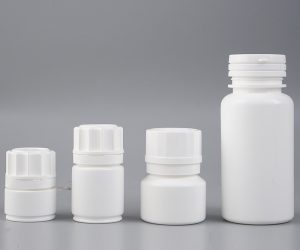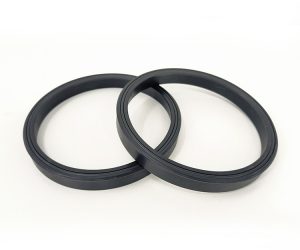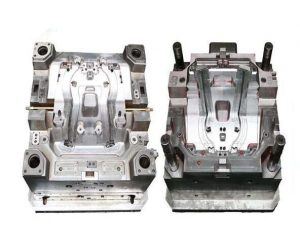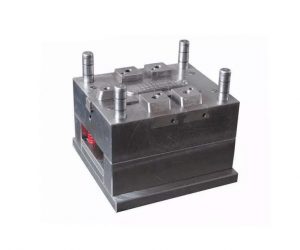Introduction
The Significance of Precision in Aluminum Milling
In the dynamic landscape of modern manufacturing, precision stands as the cornerstone upon which the success of aluminum milling services is built. Aluminum, renowned for its lightweight, corrosion - resistant, and high strength - to - weight ratio properties, has become a material of choice across a plethora of industries, from aerospace to automotive and industrial equipment manufacturing.
The demand for precision in aluminum milling is not just a matter of meeting basic functional requirements; it is a necessity driven by the evolving needs of these industries. For Yigu Technology instance, in the aerospace industry, the components produced through aluminum milling, such as aircraft fuselage frames and wing ribs, must adhere to extremely tight tolerances. Even the slightest deviation from the specified dimensions can have catastrophic consequences, affecting the aerodynamics, fuel efficiency, and safety of the aircraft. A study by the International Aerospace Components Manufacturers Association found that over 30% of aircraft - related incidents in the past decade that were attributed to component failure could be traced back to imprecise machining during the manufacturing process.
In industrial equipment manufacturing, precision - milled aluminum components are required to withstand harsh operating conditions. Whether it's heavy - duty machinery in a manufacturing plant or construction equipment, the precision of the aluminum parts determines their ability to function smoothly and efficiently over an extended period. Imprecise milling can result in increased wear and tear, frequent breakdowns, and higher maintenance costs. A case in point is a large - scale manufacturing plant that experienced a 20% increase in equipment downtime due to ill - fitting aluminum parts, which could have been avoided with more precise milling.
High - Quality Aluminum Materials for Precision
Types of Aluminum Alloys
The choice of aluminum alloy is fundamental to achieving precision in milling. Two of the most commonly used aluminum alloys in milling services are 6061 - T6 and 7075 - T6. These alloys have distinct characteristics that make them suitable for different applications, and understanding these differences is crucial for any manufacturer aiming for high - precision results.
The following Yigu Technology table summarizes the key differences between 6061 - T6 and 7075 - T6:
| Properties | 6061 - T6 | 7075 - T6 |
| Tensile Strength | 310 MPa | 572 MPa |
| Yield Strength | 276 MPa | 503 MPa |
| Hardness (Brinell) | 95 HB | 150 HB |
| Cost | Relatively low | Higher due to complex composition |
| Corrosion Resistance | Good | Fair (less than 6061 - T6) |
| Formability | Good | Moderate |
| Typical Applications | Structural components, automotive parts, marine applications | Aerospace, military, high - performance sports equipment |
The differences in these properties have a direct impact on precision milling. For Yigu Technology example, the higher strength of 7075 - T6 can make it more challenging to machine, requiring more powerful and precise equipment to ensure that the cutting process does not introduce errors due to the material's resistance. However, once machined, its high strength allows for the creation of components that can withstand extreme forces, which is essential in high - stress applications. In contrast, 6061 - T6's better formability makes it easier to achieve complex shapes with high precision during milling, and its excellent corrosion resistance ensures the long - term integrity of the milled components in corrosive environments.
Material Selection Based on Precision Requirements
Selecting the right aluminum alloy for a milling project is a decision that depends heavily on the specific precision requirements of the application.
In the aerospace industry, where precision is non - negotiable, 7075 - T6 is often the material of choice. Components such as aircraft landing gear parts need to withstand enormous forces during take - off, landing, and flight. The high strength of 7075 - T6 ensures that these parts can handle these forces without deformation or failure. Additionally, the tight tolerances required in aerospace components demand a material that can be machined with extreme precision. Although 7075 - T6 is more difficult to machine compared to some other alloys, modern CNC milling technology has made it possible to achieve the required precision. For Yigu Technology instance, a study by Boeing found that by using 7075 - T6 alloy in the production of their aircraft wing ribs and subjecting it to advanced CNC milling processes, they were able to reduce the weight of the components by 15% while maintaining the highest level of structural integrity and precision.
In the automotive industry, while precision is also crucial, cost - effectiveness and a balance of properties are often important considerations. 6061 - T6 is frequently used for automotive structural components. For example, engine blocks made from 6061 - T6 can be milled to precise dimensions to ensure proper fitment and functionality. The alloy's good formability allows for the creation of complex internal passages for coolant and oil flow, which is essential for engine performance. Moreover, its relatively lower cost compared to 7075 - T6 makes it more suitable for mass - production in the automotive industry. A report by Ford Motor Company indicated that by using 6061 - T6 for their engine blocks, they were able to reduce the production cost per unit by 10% without sacrificing the quality or performance of the engines.
In summary, the selection of aluminum alloy for precision milling is a multifaceted decision. It requires a careful evaluation of the application's precision requirements, the mechanical and physical properties of the alloy, and cost - effectiveness. By making an informed choice, manufacturers can ensure that their milled aluminum components meet the highest standards of quality and performance.
Post - Processing to Enhance Precision
Surface Treatments
Surface treatments play a pivotal role in enhancing both the precision and aesthetic appeal of aluminum milled products. Among the various surface treatment methods, anodizing, polishing, and painting/coating are widely employed.
Anodizing is a process that involves increasing the thickness of the natural oxide layer on the surface of aluminum. This is achieved by making the aluminum workpiece the anode in an electrolytic cell containing a suitable electrolyte, typically sulfuric acid. During the anodizing process, oxygen ions from the electrolyte react with the aluminum surface, forming a thick, porous oxide layer. This layer can range in thickness from a few microns to over 200 microns, depending on the specific requirements.
One of the key benefits of anodizing for precision is its contribution to dimensional stability. As the oxide layer grows, it adheres firmly to the aluminum substrate, providing a protective barrier that helps prevent dimensional changes due to environmental factors such as corrosion and oxidation. For Yigu Technology example, in aerospace components where precision is critical, anodized aluminum parts can maintain their dimensions over long periods, even when exposed to harsh conditions. The increased thickness of the oxide layer also improves the corrosion resistance of the aluminum. In a study conducted by the Aluminum Association, it was found that anodized aluminum components had a corrosion resistance that was up to 5 times greater than non - anodized ones in a salt - spray test environment. This enhanced corrosion resistance is crucial for maintaining the integrity and precision of the components, especially in applications where they are exposed to moisture or chemicals. Additionally, anodizing offers a wide range of color options. By adding dyes to the electrolyte during the anodizing process, the porous oxide layer can absorb the dye molecules, resulting in a variety of colors. This not only improves the aesthetic appeal of the aluminum products but also allows for easy identification and differentiation of components in complex assemblies.
Polishing is another important surface treatment method. It enhances the surface finish of aluminum, making it smoother and more visually appealing. There are several polishing techniques available, including mechanical polishing, chemical polishing, and electrolytic polishing. Mechanical polishing involves using abrasive materials such as sandpaper, polishing wheels, and polishing compounds to remove surface imperfections and create a smooth finish. Chemical polishing, on the other hand, uses chemical solutions to dissolve the surface of the aluminum, leveling it out and creating a shiny appearance. Electrolytic polishing is a process that uses an electric current in an electrolyte to selectively dissolve the high points on the aluminum surface, resulting in a highly polished finish.
Polishing is essential for precision - critical applications. In optical components, for Yigu Technology example, a smooth surface finish is required to ensure accurate light transmission and reflection. A study by the Optics Society of America showed that polished aluminum mirrors with a surface roughness of less than 1 nanometer could achieve reflectivity levels of over 95% in the visible light spectrum. In mechanical components, a polished surface reduces friction, which is beneficial for moving parts. For instance, in high - speed rotating machinery, polished aluminum shafts can operate more smoothly, reducing wear and tear and improving the overall efficiency of the system. A case in point is an automotive engine where polished aluminum pistons experienced 30% less friction compared to non - polished ones, leading to better fuel efficiency and engine performance.
Painting and coating are also common surface treatment methods for aluminum. They add color to the aluminum and provide protection against environmental factors. There are various types of paints and coatings available, such as epoxy coatings, polyurethane coatings, and powder coatings. Epoxy coatings are known for their excellent adhesion, chemical resistance, and durability. They are often used in industrial applications where the aluminum components need to withstand harsh chemical environments. Polyurethane coatings offer good abrasion resistance and flexibility, making them suitable for applications where the components may be subject to mechanical stress. Powder coatings are dry, free - flowing powders that are electrostatically applied to the aluminum surface and then cured under heat. They provide a thick, durable finish with a wide range of color and texture options.
Heat Treatment
Heat treatment is a crucial post - processing step that has a profound impact on the mechanical properties and precision of aluminum products. It involves a series of heating and cooling operations that are carefully controlled to achieve the desired changes in the material's microstructure.
The main types of heat treatment for aluminum include annealing, quenching, and aging. Annealing is a process where the aluminum is heated to a specific temperature and then slowly cooled. This process relieves internal stresses that may have been introduced during the milling process. When aluminum is milled, the cutting forces can cause the material to deform and create internal stresses. These stresses can lead to dimensional changes over time, affecting the precision of the components. By annealing the aluminum, the internal stresses are redistributed, and the material becomes more stable. For Yigu Technology example, in the production of aluminum alloy sheets for the packaging industry, annealing is often used to ensure that the sheets remain flat and dimensionally stable during subsequent processing steps such as stamping and forming.
Quenching is a rapid cooling process. After heating the aluminum to a high temperature, it is quickly cooled, usually by immersion in a liquid such as water or oil. Quenching is used to increase the hardness and strength of the aluminum. When the aluminum is quenched, the alloying elements are trapped in a supersaturated solid solution, which makes the material harder. However, quenching can also introduce internal stresses due to the rapid cooling. To mitigate these stresses, a subsequent tempering process is often carried out. Tempering involves reheating the quenched aluminum to a lower temperature and then cooling it slowly. This helps to relieve the internal stresses while still retaining some of the increased hardness and strength. In the manufacturing of aluminum engine components, quenching and tempering are used to produce parts that can withstand the high - temperature and high - stress conditions inside the engine.
Aging, also known as precipitation hardening, is another important heat - treatment process for aluminum. After quenching, the aluminum is heated to a relatively low temperature and held for a specific period. During this time, fine particles of a second phase precipitate out of the supersaturated solid solution. These precipitates act as obstacles to the movement of dislocations in the aluminum lattice, which significantly increases the strength and hardness of the material. Aging is commonly used in the production of high - strength aluminum alloys such as 7075 - T6. In the aerospace industry, components made from 7075 - T6 alloy that have undergone proper aging treatment can withstand the extreme mechanical stresses experienced during flight.
The impact of heat treatment on precision can be demonstrated by looking at specific data. Consider a case where a batch of aluminum 6061 - T6 parts was heat - treated. Before heat treatment, the parts had a hardness of 95 HB (Brinell hardness) and a yield strength of 276 MPa. After a proper aging heat - treatment process, the hardness increased to 110 HB, and the yield strength increased to 310 MPa. In terms of dimensional stability, measurements showed that the parts that were not heat - treated experienced a dimensional change of up to 0.2 mm over a period of 6 months when exposed to normal environmental conditions. In contrast, the heat - treated parts had a dimensional change of less than 0.05 mm over the same period. This data clearly shows how heat treatment can improve the mechanical properties of aluminum and also enhance its dimensional stability, which is crucial for maintaining precision in various applications. Heat treatment is an essential post - processing step for aluminum milling. It not only improves the mechanical properties of the aluminum but also plays a vital role in ensuring the long - term precision and performance of the milled components. By carefully controlling the heat - treatment parameters, manufacturers can achieve the desired balance of properties for their specific applications.
FAQs
What is the typical tolerance achievable in local aluminum milling services?
Local aluminum milling services, especially those equipped with advanced CNC technology, can typically achieve tolerances in the range of ±0.01 - ±0.001mm. For instance, with high - end CNC milling machines that have precise servo - motor control systems and high - resolution encoders, the deviation from the designed dimensions can be minimized to these extremely tight tolerances. This level of precision is crucial for industries like aerospace and medical device manufacturing, where even the slightest deviation can lead to significant functional issues.
How does the choice of aluminum alloy affect the milling precision?
The choice of aluminum alloy has a significant impact on milling precision. Alloys like 6061 - T6, with its good formability, are relatively easier to machine with high precision. The lower hardness of 6061 - T6 allows the milling tools to cut through the material more smoothly, reducing the risk of tool wear and dimensional inaccuracies. In contrast, 7075 - T6, which is much harder due to its alloying elements like zinc, copper, and magnesium, can pose more challenges during milling. The higher strength of 7075 - T6 requires more powerful milling equipment and careful selection of cutting parameters to ensure that the material is removed evenly without causing excessive tool wear or deviation from the desired dimensions.
Can local aluminum milling services handle complex geometries with high precision?
Yes, local aluminum milling services can handle complex geometries with high precision. Thanks to advancements in CNC technology, multi - axis milling machines are now commonly used. These machines can move the cutting tool and the workpiece in multiple directions simultaneously, enabling the creation of intricate shapes. For example, five - axis CNC milling machines can access different sides of the workpiece without the need for re - clamping, reducing the potential for errors during the machining process. Additionally, advanced CAD/CAM software allows for the precise programming of the milling paths, ensuring that complex geometries are accurately replicated. This is particularly useful in industries such as automotive and jewelry manufacturing, where complex and unique designs are required.





